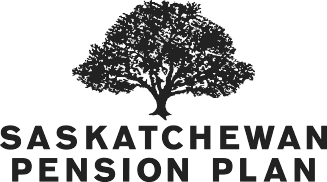Mar 3: BEST FROM THE BLOGOSPHERE
March 3, 2025

Retirement savers can do a big “catch up” in their 50s
By the time you’ve reached your 50s, the kids are usually fully educated and gone from the back room, your mortgage is close to paid off, and you’re making the most you ever have – a perfect time to catch up on those neglected retirement savings.
Writing for Money Canada, Romana King takes a look at the “catch up” years – your 50s.
“According to a data report released by Money.ca, the average retirement savings for Canadians aged 55 to 64 is $833,696 — a significant increase compared to the $183,067 saved by those in the 45 to 54 age range,” she writes. “This sharp rise suggests that many Canadians focus heavily on increasing their retirement contributions in their 50s in an effort to close the gap before they retire,” she continues.
So, she explains, if you haven’t actually got around to retirement saving and you have hit the big 5-0, don’t get stressed. “If you’ve fallen behind on your retirement savings, don’t panic — there’s still time to make meaningful progress towards this goal,” she notes, reassuringly.
Her article shows a recent social media post by a 49-year-old woman who confesses that she is “almost 49 and I have zero retirement savings. No exaggeration. Absolutely nothing…. And I know I can’t be the only one.”
It’s not a surprise, continues King, that those among us who are middle-aged aren’t finding a lot of spare dollars to tuck away for their golden years.
“Many middle-aged Canadians report feeling unprepared, often due to competing financial responsibilities such as mortgages, children’s education, and daily expenses. A survey by YouGov found that only 19 per cent of Canadians aged 35 to 54 feel confident in their retirement savings, compared to 26 per cent of those over 55. This growing concern underscores the need for proactive financial planning, even for those who feel behind in their savings journey,” she adds.
So how to catch up? Take a look at how much room you have in your registered retirement savings plan (RRSP) or Tax Free Savings Account (TFSA), she advises. If you haven’t been contributing, you may have quite a lot of room in either of these savings vehicles, she explains.
Next, make savings automatic.
“Automate contributions to your RRSP, TFSA, or other savings accounts to ensure that you’re putting aside money regularly. Payroll deductions or pre-authorized transfers make it easier to stay disciplined,” she writes.
Consider meeting with a financial adviser to “maximize investment returns” through balancing your portfolio “between high- and low-risk assets,” taking advantage of tax-efficient savings vehicles, and looking at adding “dividend-paying stocks, mutual funds, or bonds that align with your risk tolerance and retirement timeline.”
Have you calculated when you think you want to retire, and how much you’ll get from government or company retirement programs? King says this is a crucial bit of research to carry out.
As well, in your high-earning 50s, it’s time to “pay off high-interest debt” and consider “downsizing or simplifying living arrangements,” she continues.
If it doesn’t look like you’ll have saved enough by your chosen retirement date, consider working longer, or part time, or developing a “side hustle,” she suggests. If you find yourself retiring after age 65, you can delay the start of your Canada Pension Plan and Old Age Security payments, increasing what you’ll get per month.
“Catching up on retirement savings in your 50s is not just possible — it’s achievable with a well-thought-out plan. By taking advantage of tax-advantaged accounts, reducing debt, optimizing investments and boosting income where possible, you can bridge the gap and retire comfortably. Remember, the best time to start was yesterday, but the next best time is today,” she concludes.
The Saskatchewan Pension Plan is an invaluable partner for your retirement savings. SPP’s Balanced Fund features exposure to Canadian and international equities, fixed income, real estate, and more – all provided via a low-fee, professionally managed, pooled fund. If you want to make your contributions automatic, SPP can do that, via pre-authorized contributions from your bank account that can coincide with payday.
Check out SPP today!
Join the Wealthcare Revolution – follow SPP on Facebook!
Written by Martin Biefer

Martin Biefer is Senior Pension Writer at Avery & Kerr Communications in Nepean, Ontario. A veteran reporter, editor and pension communicator, he’s now a freelancer. Interests include golf, line dancing and classic rock, and playing guitar. Got a story idea? Let Martin know via LinkedIn.

Previous Post:
Feb. 27: Stateside, southern neighbours worry about running out of money in retirement; viability of government benefits
Next Post:
Mar 6: These frugality tips can free up dollars for your retirement nestegg